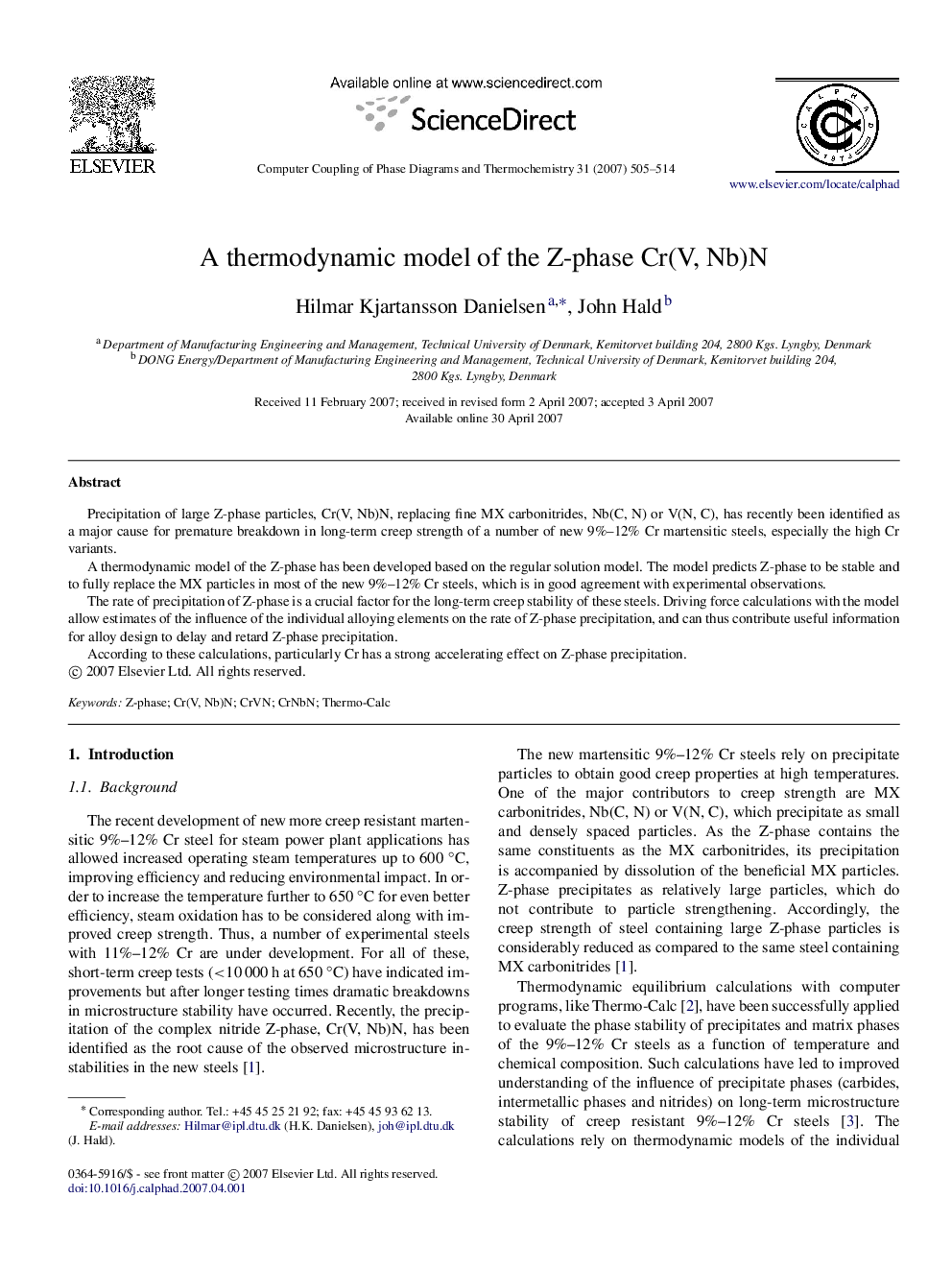| Article ID | Journal | Published Year | Pages | File Type |
|---|---|---|---|---|
| 1559310 | Calphad | 2007 | 10 Pages |
Precipitation of large Z-phase particles, Cr(V, Nb)N, replacing fine MX carbonitrides, Nb(C, N) or V(N, C), has recently been identified as a major cause for premature breakdown in long-term creep strength of a number of new 9%–12% Cr martensitic steels, especially the high Cr variants.A thermodynamic model of the Z-phase has been developed based on the regular solution model. The model predicts Z-phase to be stable and to fully replace the MX particles in most of the new 9%–12% Cr steels, which is in good agreement with experimental observations.The rate of precipitation of Z-phase is a crucial factor for the long-term creep stability of these steels. Driving force calculations with the model allow estimates of the influence of the individual alloying elements on the rate of Z-phase precipitation, and can thus contribute useful information for alloy design to delay and retard Z-phase precipitation.According to these calculations, particularly Cr has a strong accelerating effect on Z-phase precipitation.
